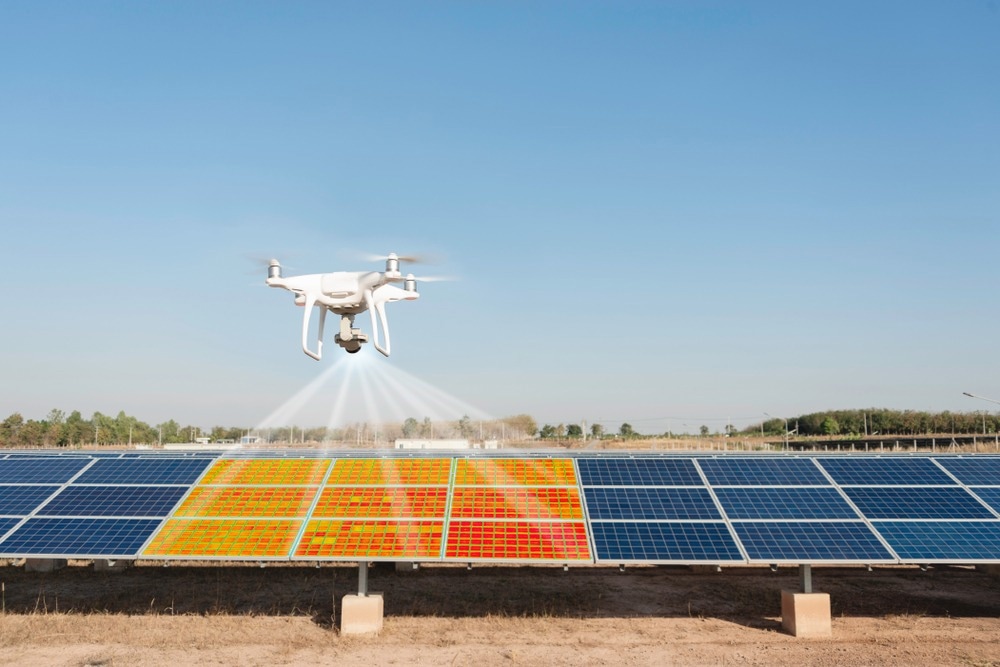
Solar energy is rapidly becoming a cornerstone of the global shift toward renewable energy. Solar farms are expanding at an unprecedented rate, but ensuring their optimal performance presents a growing challenge. Regular inspections are crucial to identify potential issues that could affect the efficiency of solar panels. Traditionally drone solar panel inspection , this task has been labor-intensive and time-consuming. However, with the advent of drone technology, solar panel inspections have undergone a revolution, offering faster, more accurate, and cost-effective solutions.
In this article, we will explore how drone technology is reshaping solar panel inspection processes, the key benefits of using drones, and how they are transforming the solar energy industry.
The need for Solar panel Inspections
Solar panels, like any other technology, are subject to wear and tear due to exposure to various environmental factors. Dust, dirt, bird droppings, water, and even thermal cycling can affect the panels over time. Additionally, mechanical defects such as microcracks, broken cells, and connector failures may develop. These issues reduce the panels’ ability to convert sunlight into electricity, ultimately decreasing energy output.
Regular inspections are essential to ensure that any performance-reducing factors are identified early and rectified quickly. A lack of timely maintenance can result in significant energy losses and financial implications for solar farm operators. Historically, these inspections were conducted manually, which proved to be not only expensive but also time-consuming, especially for large-scale solar farms. Drones now offer a solution to these challenges.
Traditional Methods of Solar panel Inspections
Before drones became part of the inspection toolkit, technicians had to inspect solar panels by physically accessing them. This often involved using ladders or scaffolding, particularly for rooftop installations, and scanning each panel manually using handheld tools like thermal cameras. While this method was effective, it was time-consuming and labor-intensive, requiring trained personnel to move from panel to panel, often under challenging conditions.
Some of the major drawbacks of traditional inspection methods include:
- **Slow Process: ** Manual inspections could take several days or even weeks, especially on large solar farms with thousands of panels.
- **Inaccuracy and Human Error: ** Visual inspections can be prone to human error. Technicians may miss small issues, such as microcracks or minor hot spots, that could grow into more significant problems over time.
- **Costly: ** The labor costs involved in manual inspections are high, and the extended downtime during inspection periods can also lead to lost revenue due to reduced energy generation.
- **Risk to Personnel: ** Climbing on roofs or scaffolding to inspect solar panels exposes technicians to safety risks, especially in extreme weather conditions or on uneven terrain.
How Drones Are Changing Solar panel Inspections
Drones, also known as unmanned aerial vehicles (UAVs), have emerged as a game-changer for solar panel inspections. Equipped with high-resolution cameras, thermal imaging sensors, and other advanced tools, drones can quickly and safely survey entire solar farms from the air, detecting issues with unprecedented accuracy. Here’s how drones are reshaping the solar inspection landscape:
- **Aerial Data Collection: ** Drones fly over the solar farm following pre-programmed flight paths, capturing high-resolution images and thermal data from each panel. This allows operators to gather large amounts of data in a short time while covering vast areas efficiently.
- **Thermal Imaging: ** Drones equipped with thermal cameras can detect temperature variations on the solar panels, which often indicate malfunctions such as hot spots, shading issues, or broken cells. These defects are invisible to the naked eye but are easily detected by the thermal sensors.
- **AI-Driven Analysis: ** Advanced software tools, often powered by artificial intelligence (AI), process the data collected by the drones. This allows operators to quickly identify problematic areas and generate detailed reports for maintenance crews. Machine learning algorithms enhance accuracy, enabling early detection of even the smallest issues.
- **Real-Time Feedback: ** Some drone systems allow for real-time data streaming, enabling operators to view live thermal or visual footage during the inspection. This means critical issues can be identified and addressed on the spot, minimizing downtime.
Benefits of Drone-Based Solar panel Inspections
- **Speed and Efficiency: ** Drones significantly reduce the time required to inspect a solar farm. While a manual inspection could take days or weeks, a drone can complete the same task in a few hours, covering hundreds of acres swiftly. This fast turnaround minimizes downtime and ensures that any issues are dealt with quickly.
- **Enhanced Precision: ** Drones offer greater accuracy than traditional manual inspections. The combination of high-resolution optical and thermal imaging allows operators to detect even the smallest anomalies, such as microcracks, debris buildup, or minor temperature fluctuations that could indicate deeper problems.
- **Reduced Costs: ** Although drones require an upfront investment, the long-term savings are substantial. Drones reduce labor costs by eliminating the need for large teams of technicians, and faster inspections lead to less downtime, maximizing the energy output of solar farms.
- **Safety Improvement: ** Drone inspections eliminate the need for technicians to physically access hard-to-reach areas. This greatly reduces the risk of accidents, especially when inspecting rooftop solar panels or installations located on uneven or hazardous terrain.
- **Comprehensive Coverage: ** Drones can inspect all parts of a solar array, even those that are difficult or dangerous to access manually. Whether the panels are mounted on a rooftop or spread across a vast solar farm, drones can quickly and easily cover the entire installation.
The future of Drone Inspections in Solar energy
As drone technology continues to advance, we can expect even more innovations in the field of solar panel inspections. In the future, drones may become fully autonomous, capable of conducting inspections and repairs without human intervention. Drone systems could also integrate with smart solar farms, providing real-time performance data and maintenance alerts to ensure maximum energy efficiency.
Moreover, advances in AI and machine learning will continue to enhance the precision and accuracy of drone inspections. Predictive maintenance powered by AI could allow solar farm operators to anticipate issues before they arise, optimizing energy production and reducing downtime.
Conclusion
The integration of drone technology into solar panel inspections marks a major leap forward in the renewable energy sector. With their ability to inspect large areas quickly, safely, and accurately, drones are transforming the way solar farms are maintained. By detecting issues early, improving safety, and reducing costs, drone inspections are helping solar farm operators maximize efficiency and extend the lifespan of their assets.
As solar energy becomes an increasingly important component of the global energy mix, drone inspections will play a critical role in ensuring that solar installations continue to operate at peak performance, driving the shift toward a sustainable, renewable energy future.

